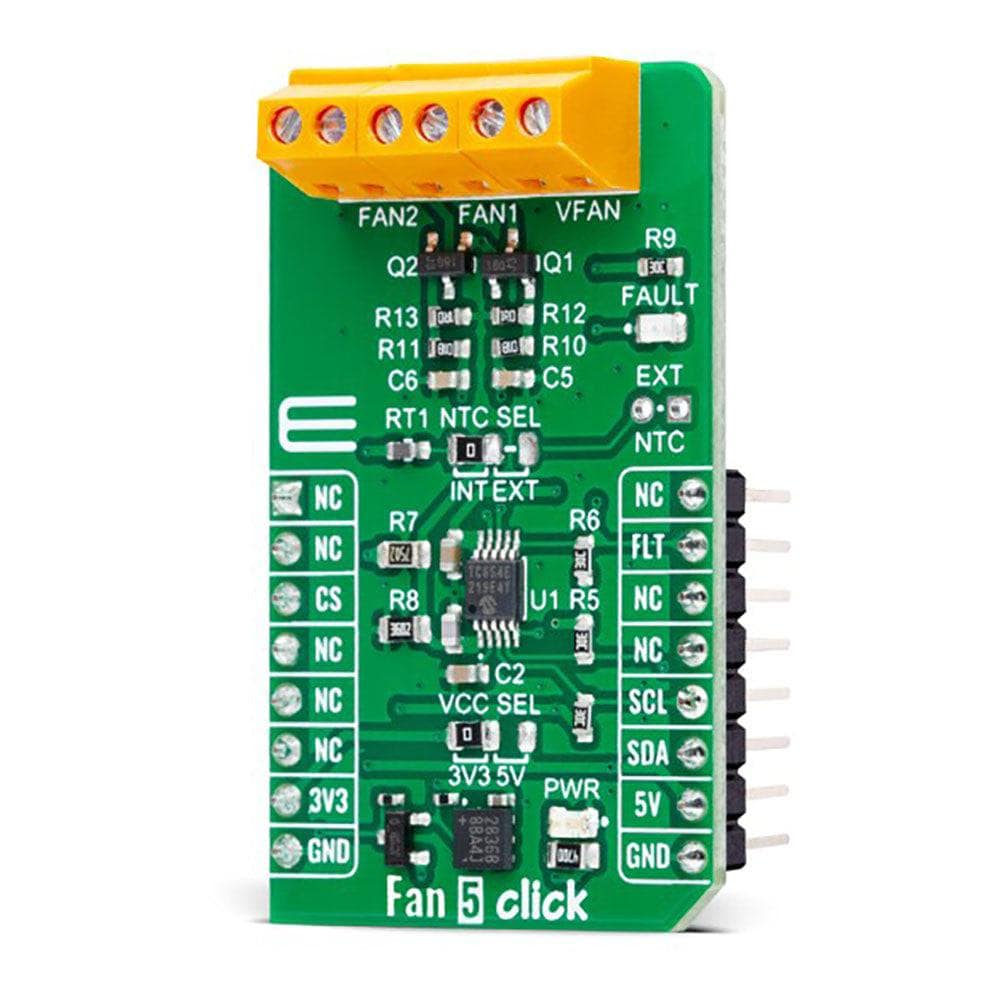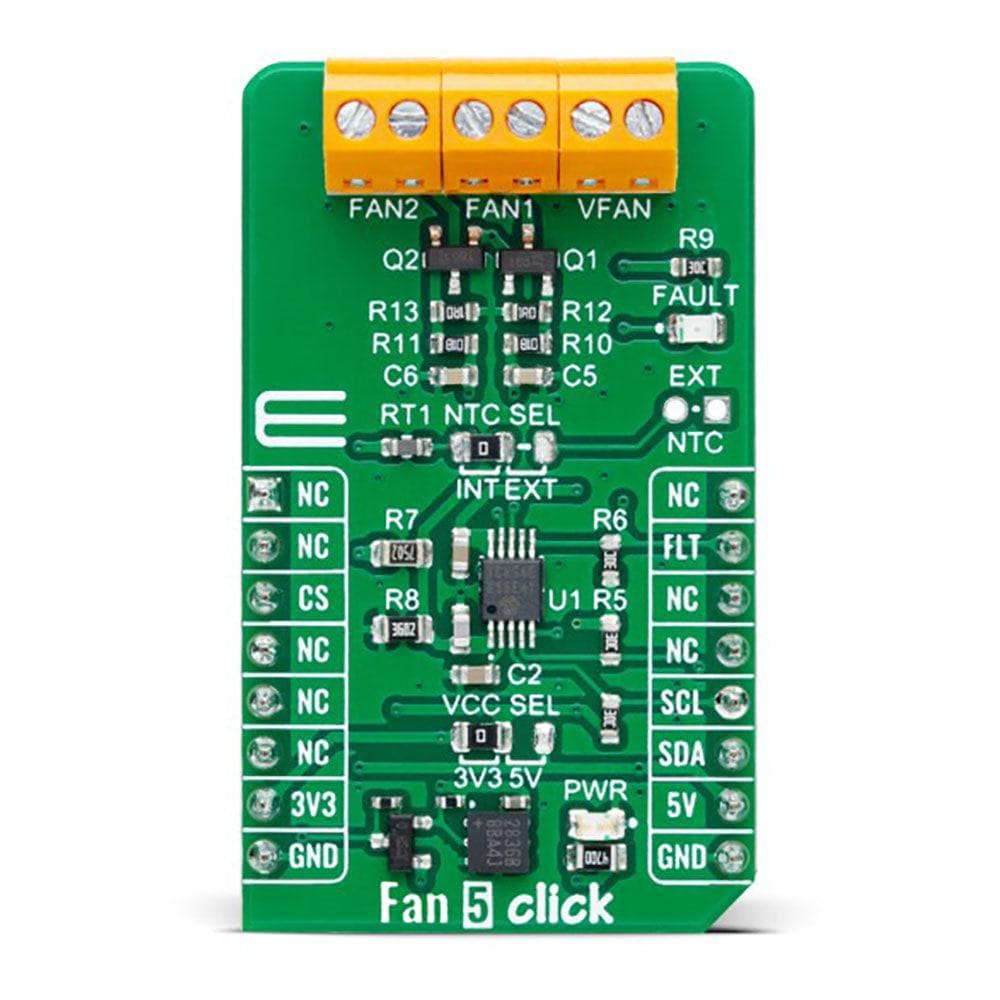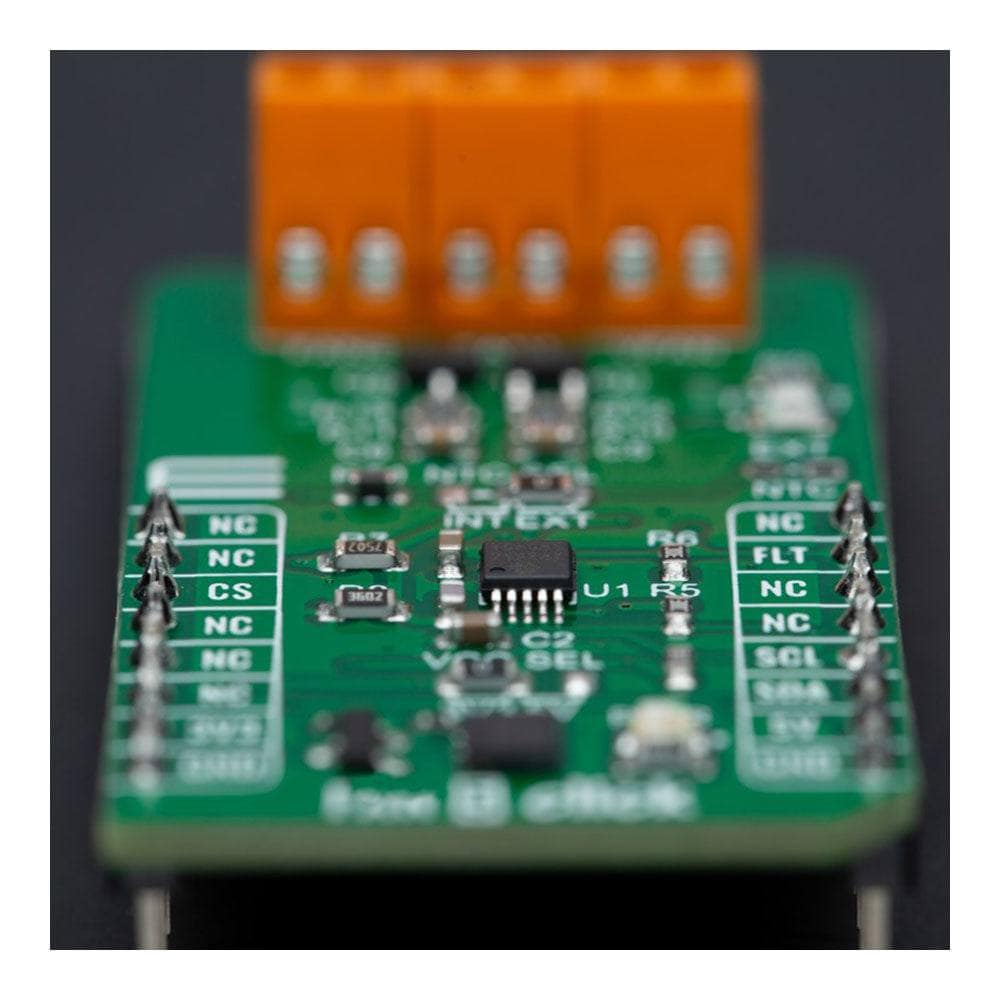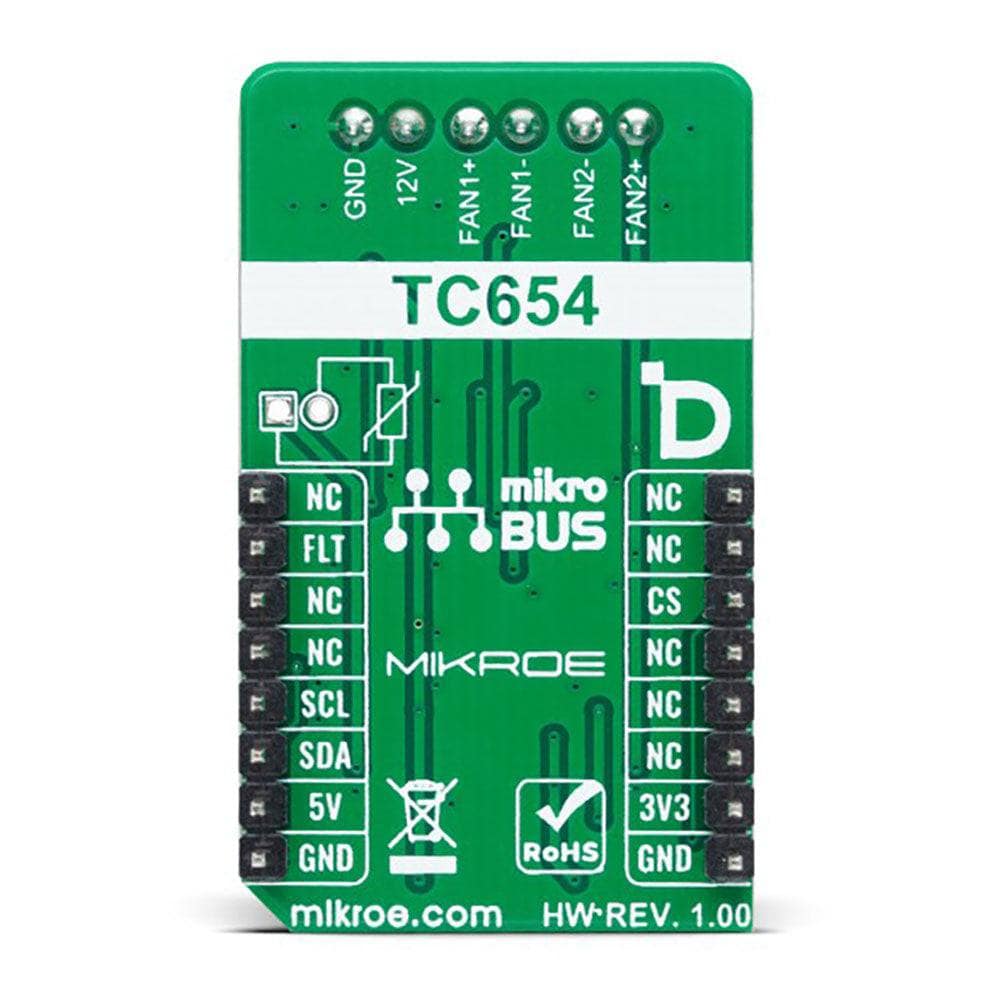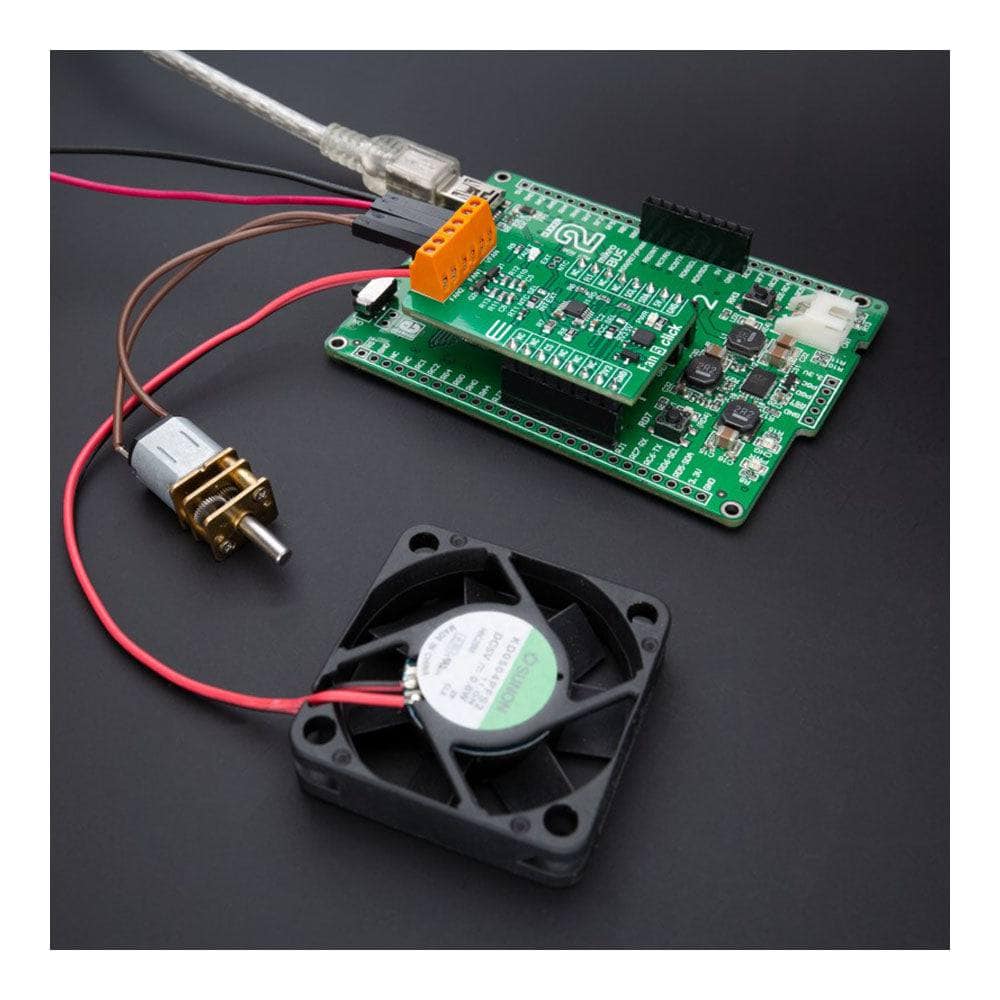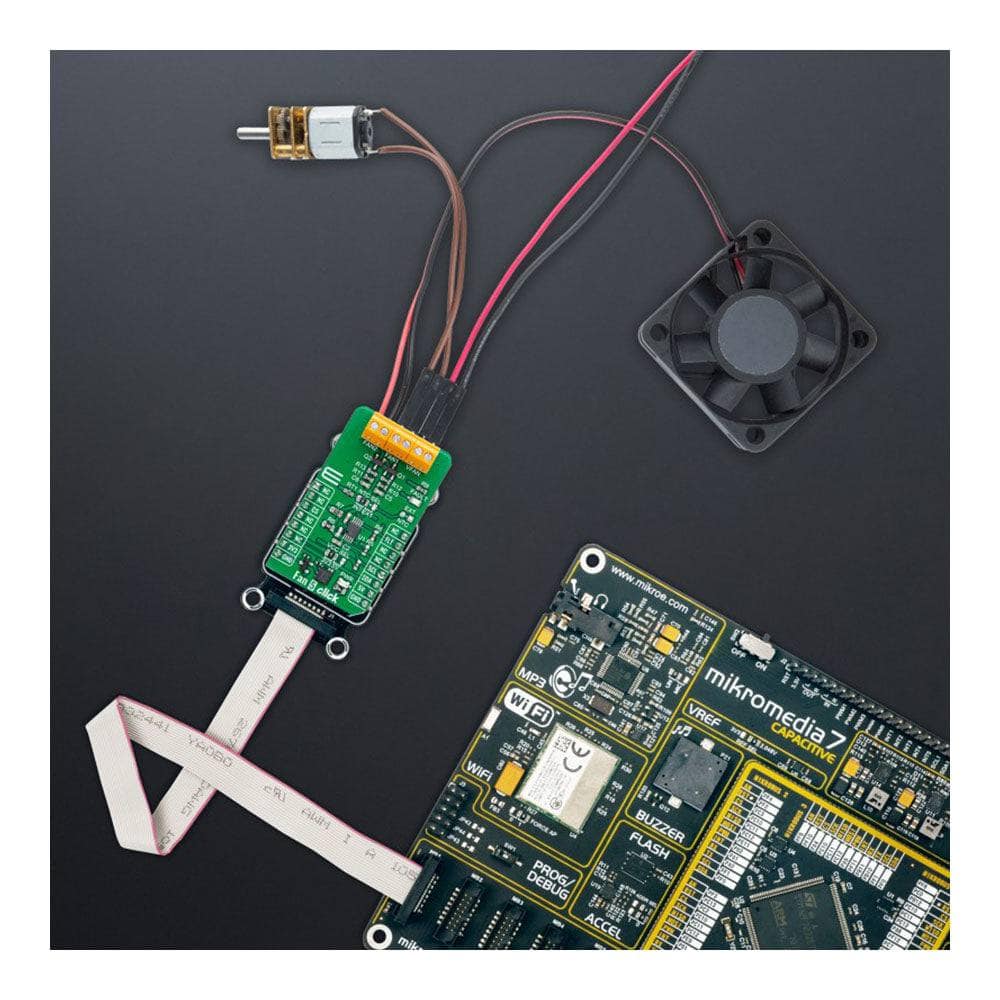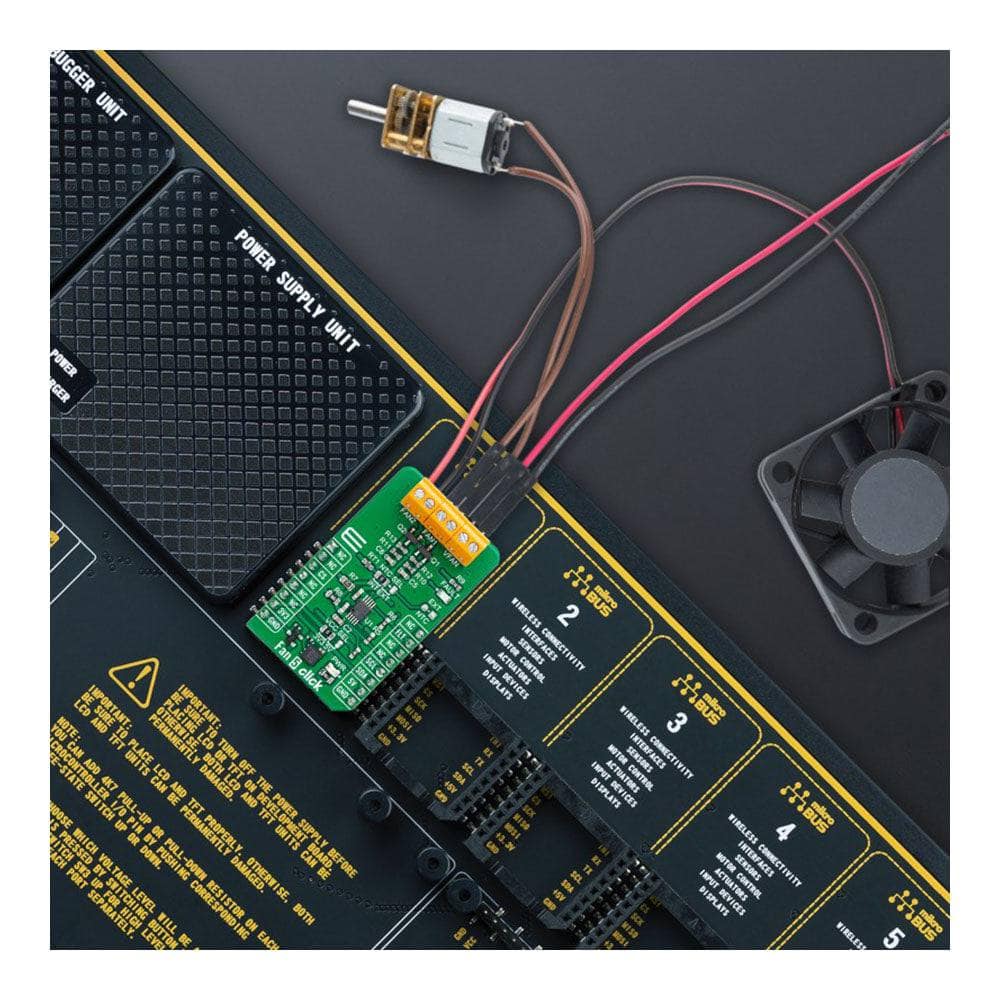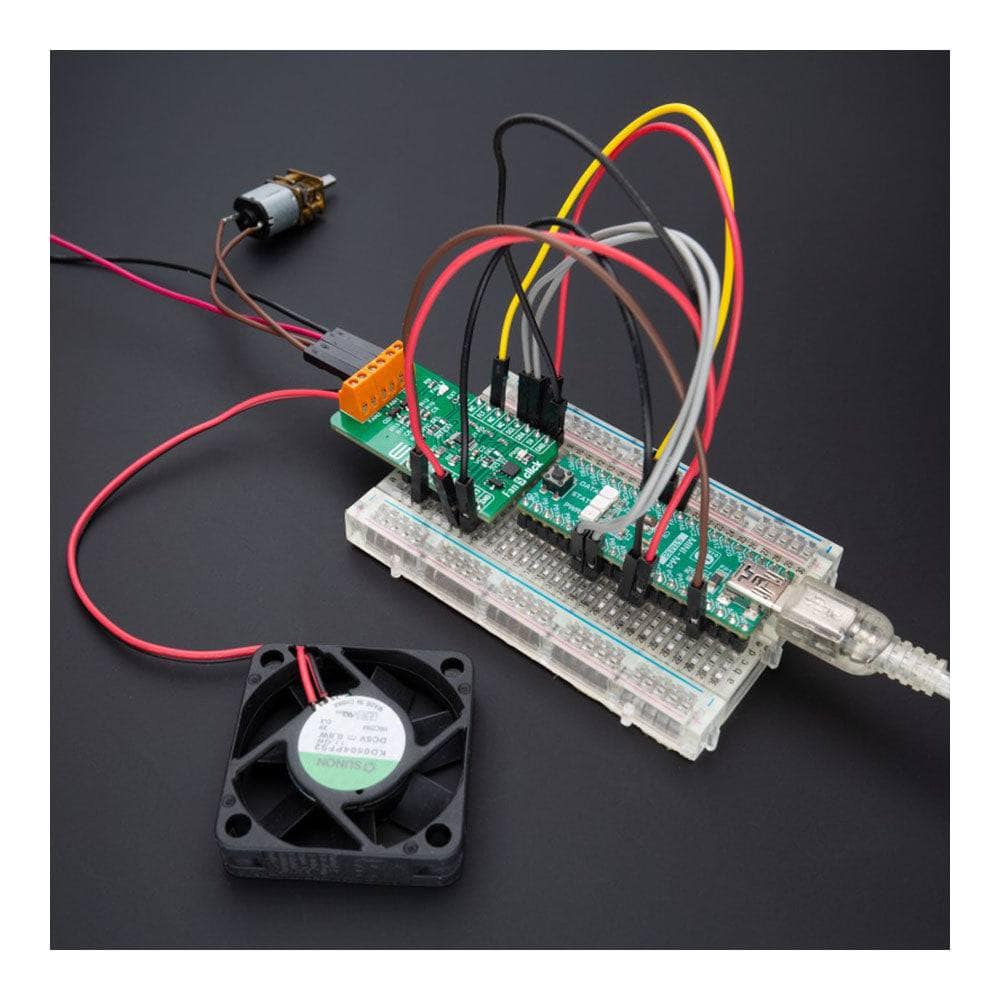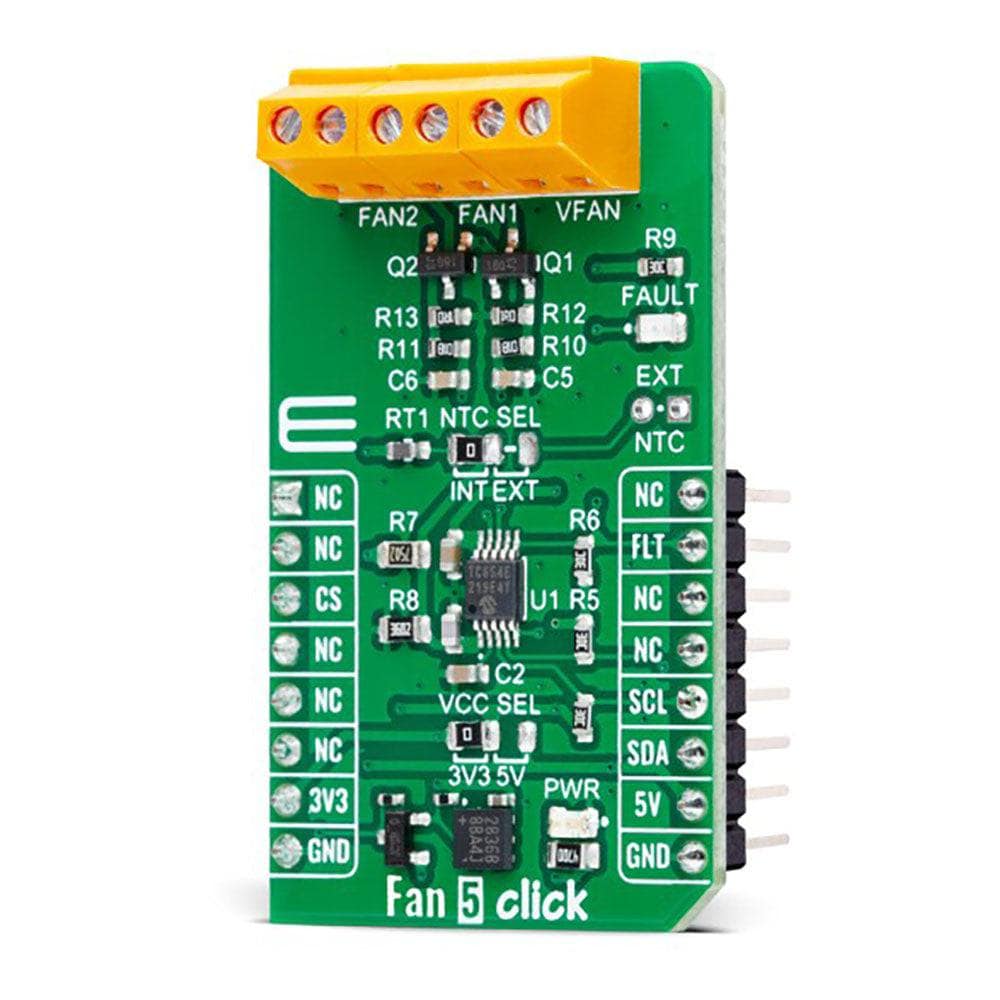
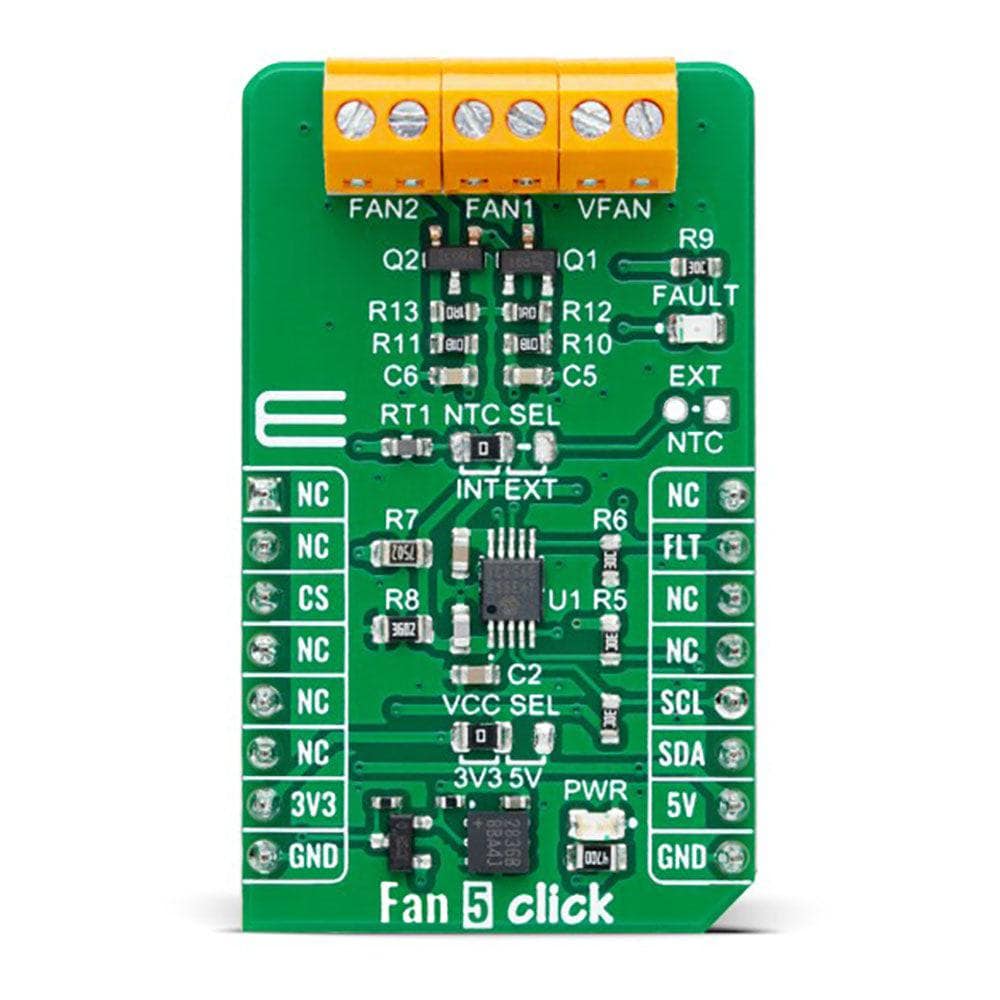
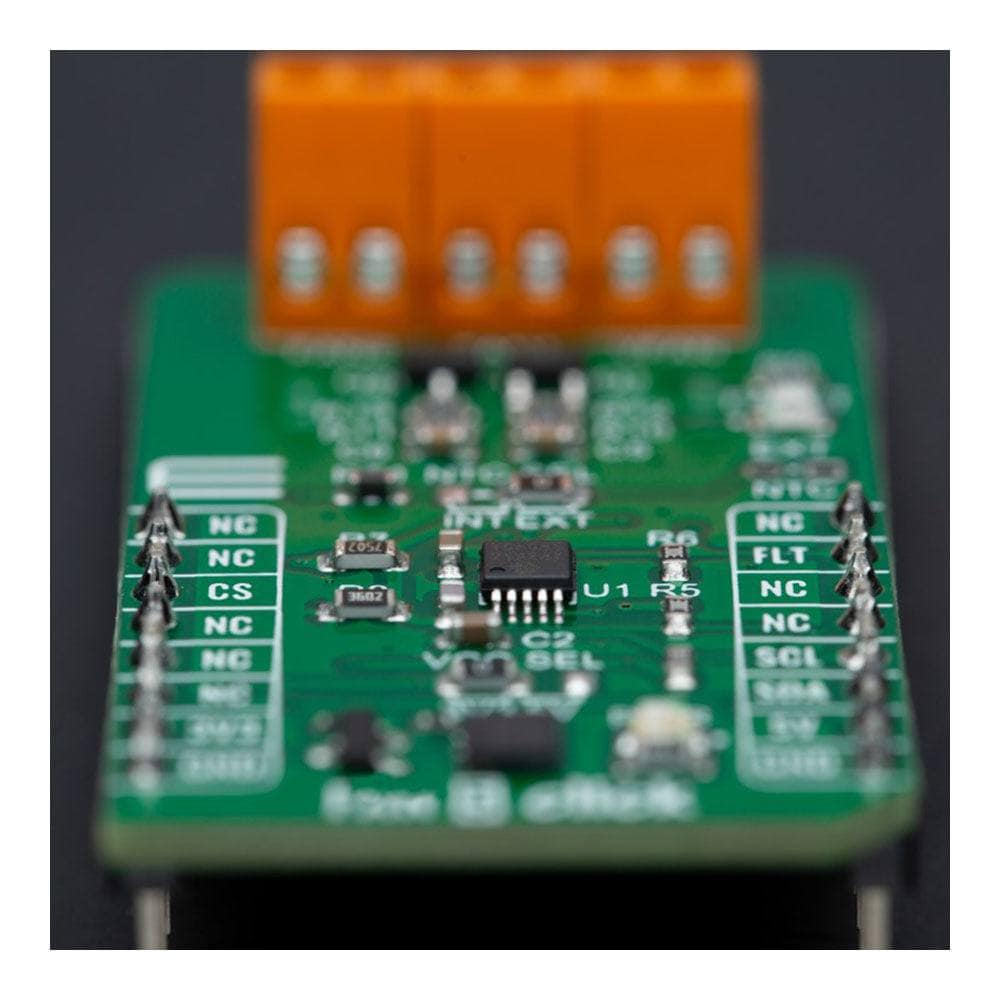
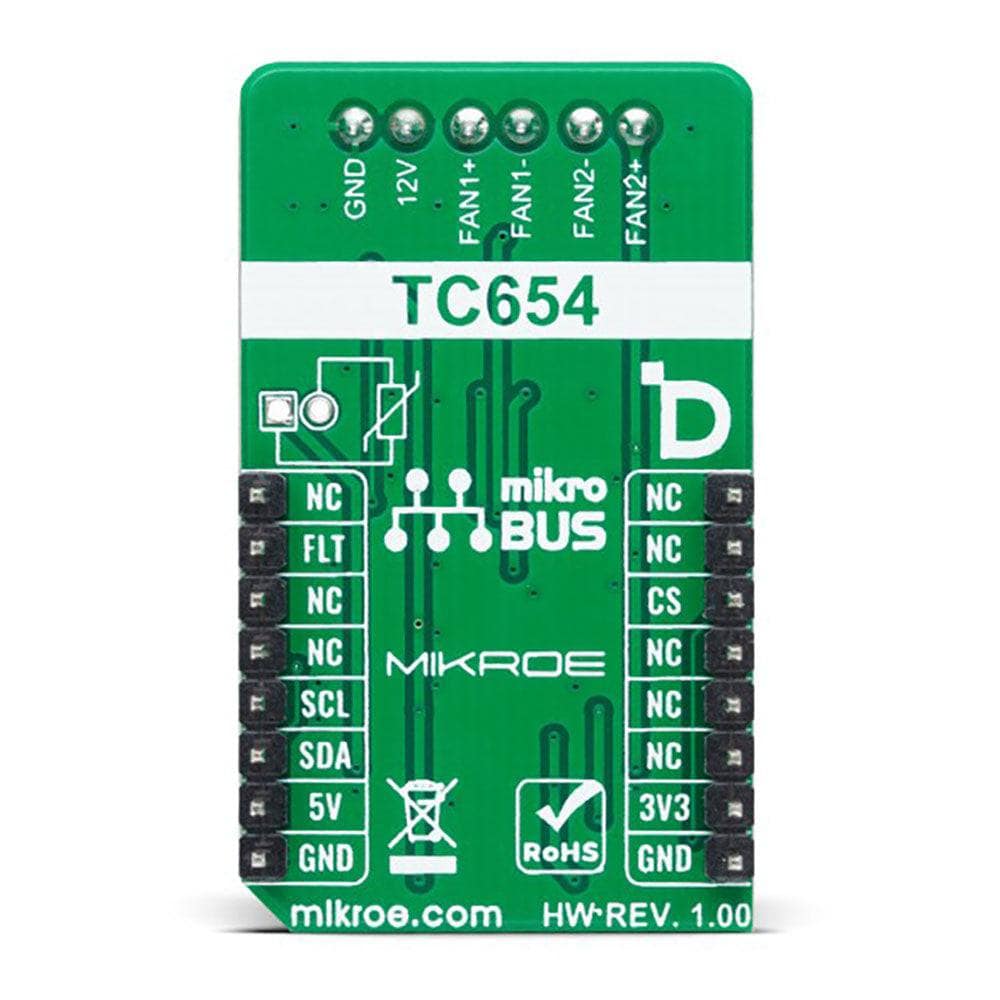
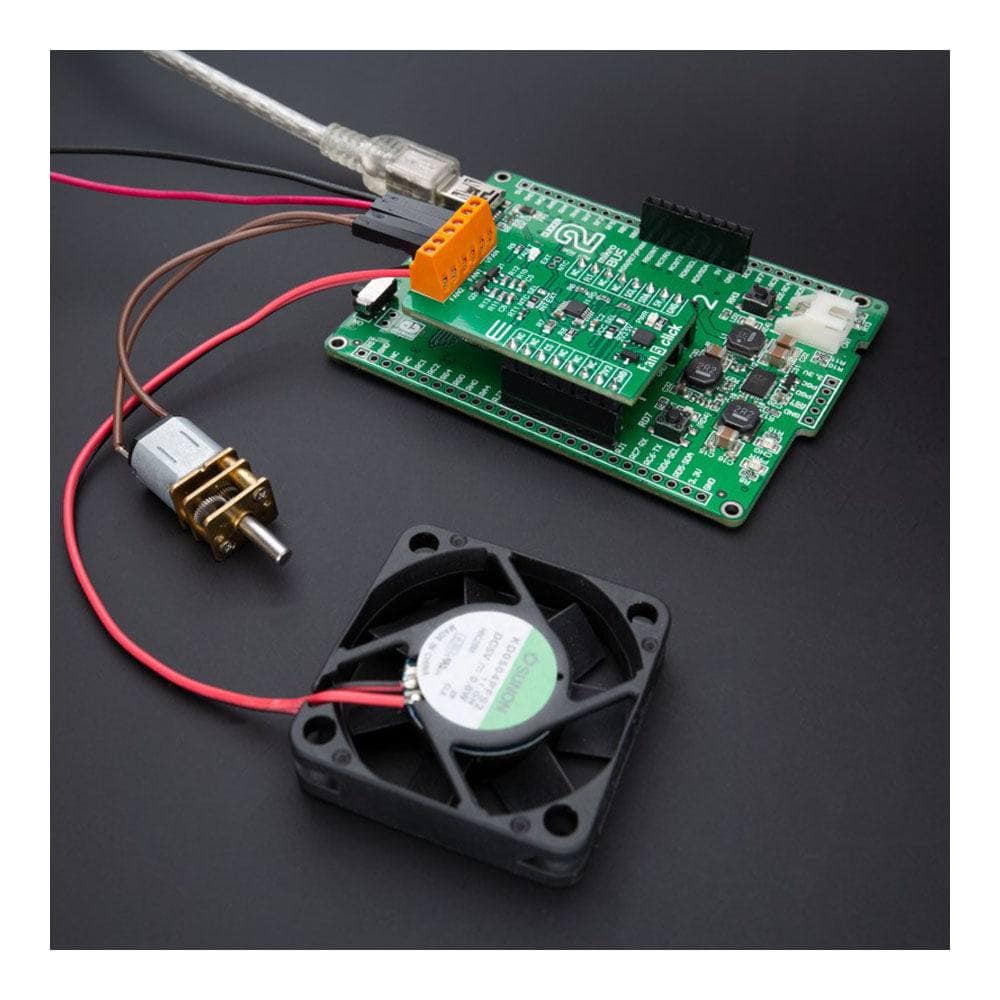
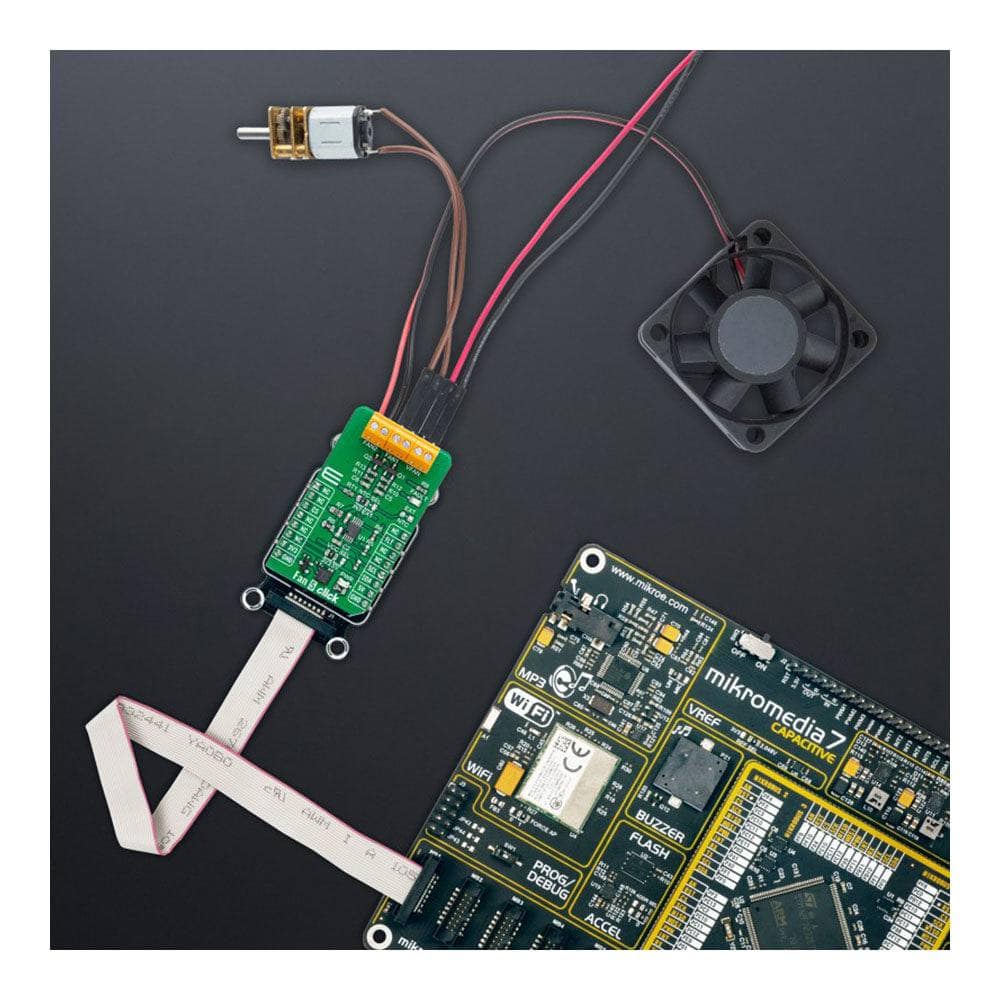
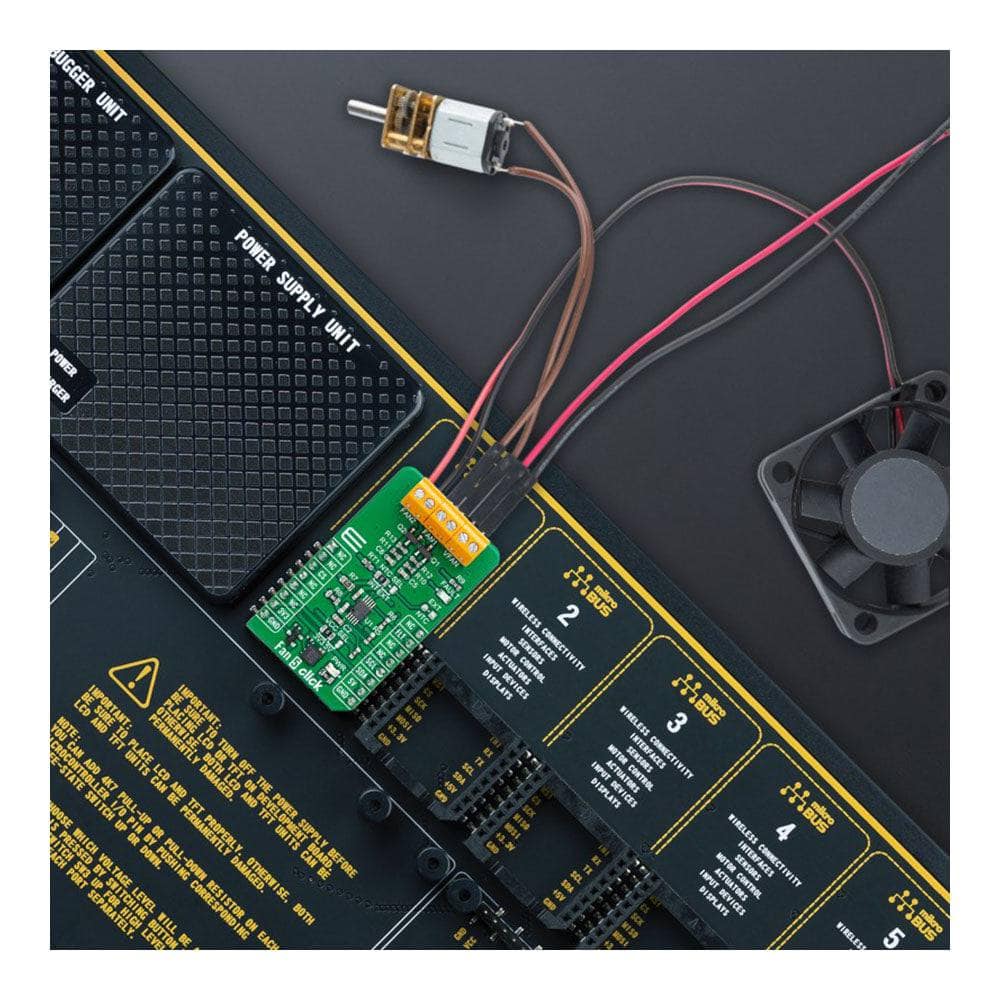
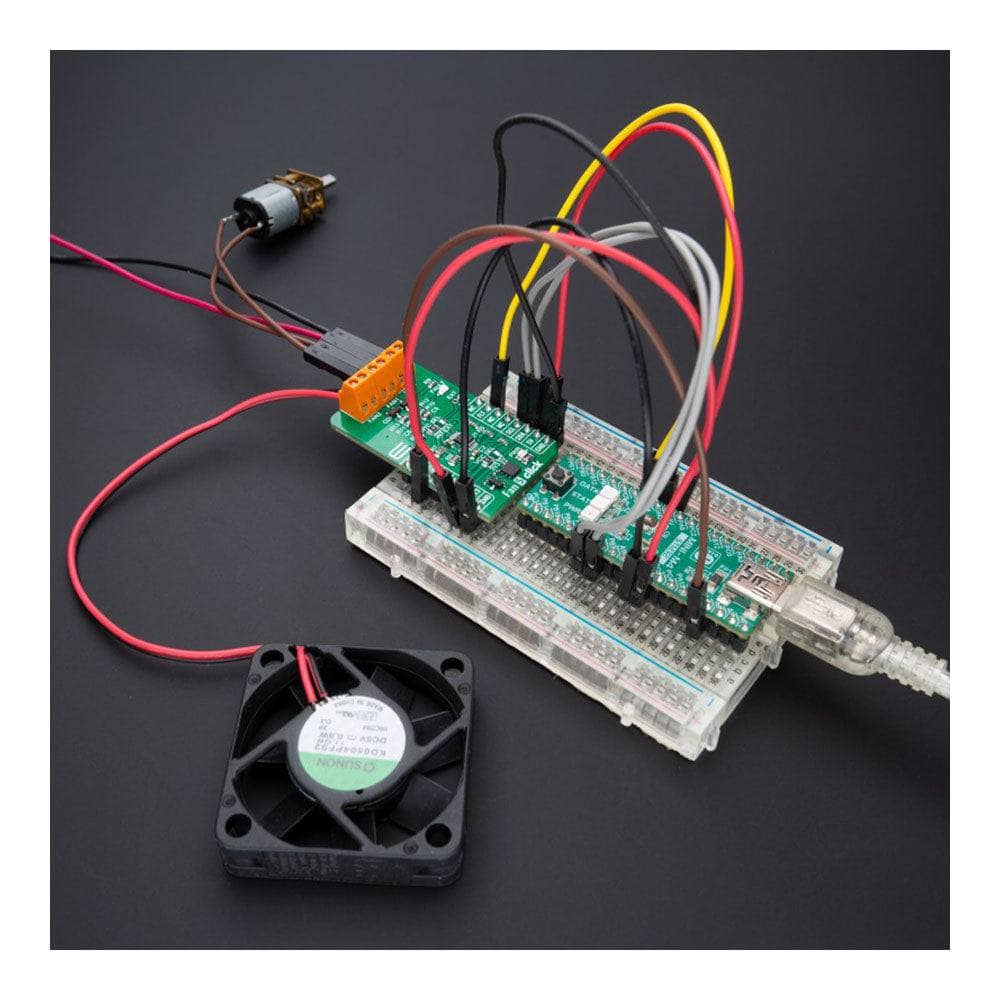
Key Features
Overview
Introducing the Fan 5 Click Board™ - the ultimate solution for managing your fan speed! This compact add-on board features Microchip's TC654, a PWM mode fan speed controller with FanSense™ technology, making it perfect for brushless DC fans. With its temperature-proportional fan speed control, you'll experience lower acoustic noise and increased fan longevity. Plus, with the ability to control the speed of two cooling fans based on thermistor temperature or I2C-programmed PWM duty cycle, and a fan failure indicator to alert you when the fan's RPM falls below a user-set threshold, this Click board™ is ideal for networking equipment, servers, and other applications requiring cooling and temperature control.
And the best part? The Fan 5 Click Board™ is supported by a mikroSDK-compliant library that simplifies software development and comes fully tested and ready to be used with a system equipped with the microBUS™ socket. Don't settle for anything less - upgrade to Fan 5 Click Board™ today!
Downloads
Présentation de la carte Click Board™ Fan 5 - la solution ultime pour gérer la vitesse de votre ventilateur ! Cette carte complémentaire compacte est dotée du TC654 de Microchip, un contrôleur de vitesse de ventilateur en mode PWM avec technologie FanSense™, ce qui la rend parfaite pour les ventilateurs CC sans balais. Grâce à son contrôle de vitesse de ventilateur proportionnel à la température, vous bénéficierez d'un bruit acoustique plus faible et d'une longévité accrue du ventilateur. De plus, avec la possibilité de contrôler la vitesse de deux ventilateurs de refroidissement en fonction de la température de la thermistance ou du cycle de service PWM programmé en I2C, et un indicateur de panne de ventilateur pour vous avertir lorsque le régime du ventilateur tombe en dessous d'un seuil défini par l'utilisateur, cette carte Click™ est idéale pour les équipements réseau, les serveurs et d'autres applications nécessitant un refroidissement et un contrôle de la température.
Et le meilleur dans tout ça ? Le Fan 5 Click Board™ est pris en charge par une bibliothèque compatible mikroSDK qui simplifie le développement logiciel et est livrée entièrement testée et prête à être utilisée avec un système équipé du socket microBUS™. Ne vous contentez pas de moins : passez dès aujourd'hui au Fan 5 Click Board™ !
| General Information | |
|---|---|
Part Number (SKU) |
MIKROE-5507
|
Manufacturer |
|
| Physical and Mechanical | |
Weight |
0.02 kg
|
| Other | |
Country of Origin |
|
HS Code Customs Tariff code
|
|
EAN |
8606027385810
|
Warranty |
|
Frequently Asked Questions
Have a Question?
-
Is the Mikroe Fan 5 Click Board™ compatible with other mikroBUS™ boards?
Yes, the Mikroe Fan 5 Click Board™ is compatible with any development board that has a mikroBUS™ socket.
-
Does the Mikroe Fan 5 Click Board™ have an automatic speed control?
No, the Mikroe Fan 5 Click Board™ doesn’t have an automatic speed control feature. It requires a microcontroller to send PWM signals to control the fan speed.
-
What is the voltage and current rating of the Mikroe Fan 5 Click Board™?
The Mikroe Fan 5 Click Board™ can handle a supply voltage of 5V and a maximum current of 2A. Fans rated at 12V and 5V are compatible.
-
What is the maximum fan speed that can be controlled with the Mikroe Fan 5 Click Board™?
The maximum fan speed that can be controlled with the Mikroe Fan 5 Click Board™ is dependent on the fan that is being used. The board can generate PWM signals with a frequency of 25 kHz, and the duty cycle of the signals can be adjusted to control the speed of the fan.
-
How do I use the Mikroe Fan 5 Click Board™?
The Mikroe Fan 5 Click Board™ can be used with a variety of microcontroller boards, such as the MikroElektronika Flip & Click, Arduino, and Raspberry Pi. To use the board, you will need to connect it to your microcontroller board using the mikroBUS™ socket, and then use the appropriate programming language and library to send PWM signals to the board to control the speed of the fan.
-
What is the Mikroe Fan 5 Click Board™?
The Mikroe Fan 5 Click Board™ is a fan speed controller that allows you to control the speed of a DC fan using PWM (Pulse Width Modulation) signals. It can be used to control the speed of fans in a variety of applications, such as cooling systems, ventilation systems, and more.

